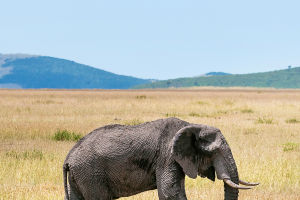Kingfishers are medium-sized water birds, which look like woodpeckers from a distance. Their food is mainly fish. They also eat crustaceans and a variety of aquatic insects.
Kingfishers inhabit in water areas such as shrubs or sparse forests, clear and slow flowing rivers, streams, lakes, and irrigation canals. They often live alone on the branches or rocks near the water and waits for opportunities to hunt. Their food is mainly small fish, and they eat crustaceans, a variety of aquatic insects and their larvae. They also peck small frogs and a small number of aquatic plants. Kingfishers can maintain excellent eyesight when they plunge into the water, because their eyes can quickly adjust the perspective contrast caused by light in the water.
Kingfishers can use their big mouths to nest on the earth cliffs. They also nest in the tunnels of field dams. Generally, there is no bedding at the bottom of the tunnels, and their eggs are directly laid on the nest ground. Each nest lays 6-7 eggs. Their eggs are white, bright, slightly spotted, about 28 mm in size × 18 mm, 1-2 litters per year; The incubation period is about 21 days. The male and female hatch eggs together, but only the female feeds the chicks.
Kingfishers often act alone, they usually resting on the stumps and rocks near the river, and sometimes on the low branches of small trees near the river. They often stare at the water surface motionless for a long time. As soon as they see the fish and shrimp in the water, they immediately plunged into the water with a very fast and fierce posture and caught them.
Sometimes kingfishers also agitate their wings to float in the air, look down at the water, and immediately plunge into the water when they see food, and quickly catch it. Usually, the prey is brought back to their habitat, beaten on branches or stones, and then eaten as a whole after the fish die. Sometimes they fly in a straight line at low altitude along the water surface.


